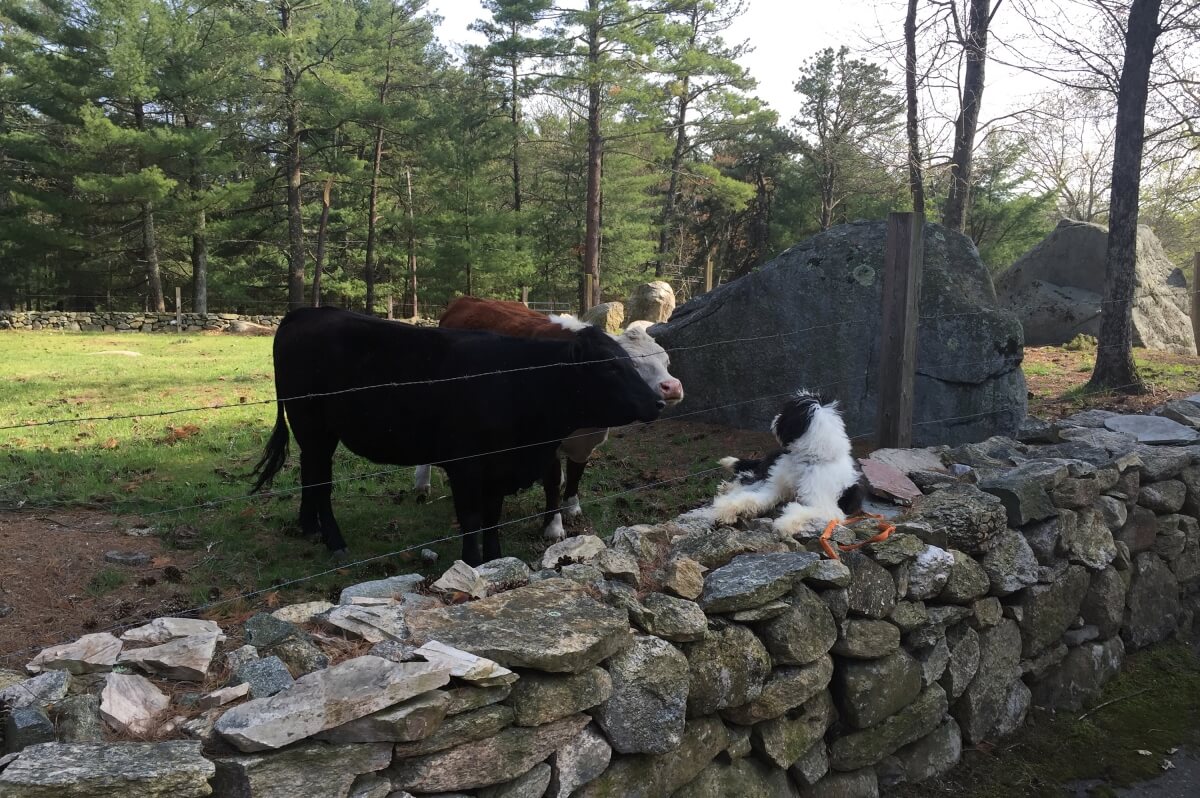
Fearful Behavior in Dogs
When your dog is fearful, it’s not just about a tucked tail or shaking paws. It’s a full story playing out in their body language, their past, and what they believe they can control. I’ve worked with many dogs over the years, and one of the trickiest — yet most rewarding — behaviors to transform is fear.
What Fear Looks Like (Beyond the Tail Tuck)
We humans tend to overthink and misinterpret what dogs communicate. Sure, a dog with a tail pulled between its legs can be scared — but that’s just a single clue in a larger puzzle. You need to read the whole picture:
- Is the dog trying to shrink away, turning sideways or lowering its body?
- Are the ears pinned or pressed back?
- Is it avoiding eye contact or freezing in place?
- Are they panting, whining, or trembling?
Your Role as the Handler: The Biggest Piece of the Puzzle
It’s not so much what you do as it is how you do it. When a dog shows fear, the way you react in that instant can either validate the fear or help guide them out of it. Here’s a breakdown of the strategies I lean on (from most common to least used) when I see fearful behavior:
- Over-rule the fear
- This is my go-to. Often a dog is responding to unfamiliarity rather than something inherently dangerous. In these cases, I step in, calm the dog, and guide them through the situation. My job as handler is to show them there’s no real reason to be afraid — respectful leadership is the key.
- Remove the dog from the situation
- If the scenario is too chaotic or uncontrollable, sometimes the best move is to create physical distance so your dog can calm down. This doesn’t teach long-term coping, but it can prevent escalation and give you a reset.
- Eliminate the fearful stimulus
- This is my least-favored option, because it often prevents the dog from learning how to cope with or overcome the fear. If you always remove, hide or redirect the dog from the thing that scares them, the fear stays unchallenged and the dog never hsa a chance to overcome the fear in a natural way.
In every case, your awareness, emotional composure, and leadership as the handler are critical.
Balancing Compassion and Leadership
Here’s where things get delicate. If you acquiesce every fearful cue — you can reinforce the fear. But if you’re dismissive or harsh, you break trust. The sweet spot lies in:
Compassion — acknowledging the fear, and deciding which of the above three options is best for the dog and the dog's long-term growth and training/socialization.
Fair firmness — guiding them out of freeze or avoidance, teaching them to trust you in stressful situations. Once you have decided that the fear stimulus is not actually a danger for the dog and decided how you will respond, continue with whichever decision you've made with confidence.
Emotional awareness — be sensitive and aware of your dog's responses, even if you have decided to work through the fear. Your state of mind and energy are just as important as the dog's.
Your presence matters. Dogs will test boundaries or freeze out of fear. In those moments, you need to be mentally present enough to say, “Okay, I see you, and I’m going to lead us through this.” Ultimately, your goal is for your dog to trust your judgment — even when they don’t fully understand what’s happening. With calm, condfident, and fair leadership the dog will learn that trust and obedience is the way to be safe. Your dog needs to trust you. You earn that trust with benevolent, compassionate and wise leadership.In Closing: Who You Are to Your Dog…
The fear is real — don’t dismiss it. But your leadership matters far more. You are the anchor. You are the guide. You are the leader that says, “I see your fear, but you must trust me.” With compassionate leadership, fears can be quickly overcome. Your dog can learn to face life with curiosity and confidence instead of dread.
If you’d like help applying these ideas to your dog’s specific situation — or want guided steps tailored to your dog’s fear level — I’d be happy to talk it through with you. Just let me know how I can help.
Who you are to your dog is EVERYTHING.
Shawn Hines
~ Oct 15, 2016
